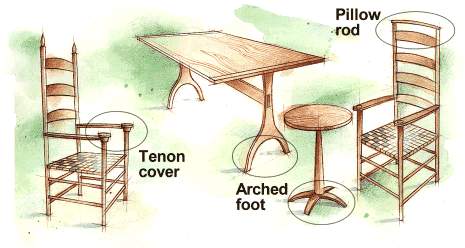SPLINTERS
Tennessee Valley Woodworkers
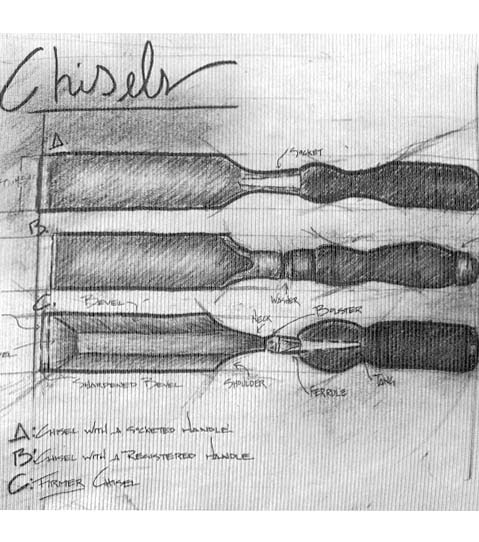 Vol. 18/ Issue 2 February
2003 Editor: Tom Gillard Jr.
Vol. 18/ Issue 2 February
2003 Editor: Tom Gillard Jr. 

Meeting Notice:
The next meeting of the TN Valley Woodworkers
Will be held, February 18th, at 7:00 p.m. in the
Duck River Electric Building, Decherd, TN
All interested woodworkers are invited!

The following people have agreed to serve as contacts for their particular
skills. If you have questions, suggestions for activities, or other
comments relating to these skills, please call these folks. Their
interest is to help the club better serve their area of expertise.
Your participation with them will help them achieve that goal.
Design: Alice
Berry 454-3815
Finishing: Phil
Bishop
967-4626
Turning: Tom
Church 967-4460
Carving: Harry
May 962-0215
Sharpening:
Bob
Reese 728-7974
Joinery: Ross
Roepke 455-9140
Health and Safety:
Maurice
Ryan 962-1555
List of
Club Officers
President: Doyle
McConnell
V. President: Ken
Gould
Secretary: Barbara
Keen
Treasurer: Henry
Davis
Publicity:
Loyd Ackerman
Newsletter Editor Tom Gillard
Jr.
GOD BLESS AMERICA!

Please remember, in your thoughts and prayers, all those touched by
the Space Shuttle Tragedy
I hope everyone survived that COLD weather we had a few weeks ago.
Have you ever noticed that during the coldest, darkest days of winter the
mailman can bring you something to take your mind off of the weather.
No, not your tax forms, but the new seed catalogs. I got mine a few
weeks ago and it was a real pleasure to look through it and dream of warmer
times and the taste of fresh vegetables again. Especially the corn!
What it Takes to be Shaker
The first Shakers came to America from England
in 1774. Following them from the outside world,
they recruited members to live and work in
self-sufficient, communal settlements. By the early
1800s there were 18 Shaker communities in seven
states.
Shakers became known in the world outside their settlements for
excellence in whatever they grew or made, especially their furniture. In
keeping with the Shakers' unadorned lifestyle, they built purely functional
pieces devoid of ornamentation. Yet their furniture displayed delicately
constructed, graceful lines, and sensitivity to proportion reminiscent
of
Danish modern or Scandinavian-style furniture of the 20th century.
The 1830s marked Shaker furniture's Golden Age. But they continued
producing it, even commercially, into the early 20th century.
Native wood from the forest
Shakers used local trees. Ash,
basswood, birch, butternut, cherry,
white pine, and sugar maple
(especially figured) were common in
New England settlements. Beech,
chestnut, yellow poplar, and walnut
were added in Kentucky and Ohio.
Fruitwood (apple, pear, etc.) was
used widely for pulls.
Finishes varied with the stock
Because several woods went into
chest of drawers, cabinets, and
tables, these types of furniture were
paint was opaque. Later, it was a
wash through which the grain was
visible with varnish as a top coat.
Chairs and rockers made of only one
kind of wood were varnished or
shellacked after staining. Darker
hardwoods, such as cherry, were
finished with linseed oil.

Joinery that stayed together
tongue-and-groove cutting machine,
so they employed it to edge-join
boards. Splined grooves, butt joints,
lap joints, through tenons (wedged
and keyed), and dadoes for shelving
were favorite joinery methods.
Dovetails are the most observable
construction feature. They were used
for their strength and durability rather
than for appearance.
Details didn't decorate
Shaker case goods featured drawers,
usually combined with larger storage
spaces covered by frame-and-panel
doors. Except for a restrained
top-edge molding in cove,
quarter-round, or bullnose shape,
case goods were simple. They sat
directly on the floor, had cut feet, or
applied legs.
Side chairs, hung on wall pegs when not in use, were light and graceful
with plain turned stiles, legs, and stretchers. Finials at the top of the
stiles
were intended as handles to lift the chair, not as decoration. The bottom
of
the back legs usually had turned tilters (early Shaker) that protected
the
floors. Later, tilters were commonly made of brass.
Rocking chairs had finials atop their stiles, too, or a plain crossbar
on
which to hang a pillow. On the top of the front arms were
mushroom-shaped, wooden tenon covers. Chair and rocker seats featured
woven wood splints, rush, leather, cane, and, after 1830, colorful cloth
tape made on special looms.
Trestle tables were known for gracefully arched feet (on small tables,
too).
A raised stretcher beneath the top added leg room for seating comfort.
Could you please move over a little so I
can see what that is on the wall behind you...


I've never seen one of those before...
*******************************************
We had THREE new members last month: David Jacobs, Pat Patrick, and
Howard and Janice Bauder.
WELCOME to the TN Valley Woodworkers
*******
Henry Davis said it was time for this years dues
to be paid *******
FOR SALE
Please see the CLASSIFIED adds on the web site for these items...
Wood dust can cause cancer:
study
Improper protection could lead to cancer in the nasal
cavity or sinuses, OSHA says
"As a general rule hardwoods are more hazardous to human health than
softwoods," OSHA states. " There are exceptions - in particulate
Western red cedar, a softwood, is usually identified as one of the most
hazardous to human health.
READ THIS!!!
WOOD DUST*
First Listed in the Tenth Report on Carcinogens
CARCINOGENICITY
Wood dust is known to be a human carcinogen, based
on sufficient evidence of carcinogenicity from studies in humans. An association
between wood dust exposure and cancer of the nose has been observed in
many case reports, cohort studies, and case-control studies that specifically
addressed nasal cancer. Strong and consistent associations with cancer
of the nasal cavities and paranasal sinuses were observed both in studies
of people whose occupations are associated with wood dust exposure and
in studies that directly estimated wood dust exposure.....
***READ THIS REPORT!!!***
10th Report on Carcinogens
U.S. Department of Health and Human Services
Public Health Service
National Toxicology Program (<== click on this link to see
the report)
(scroll down to wooddust)
SHOW AND TELL:
(some pictures in the gallery)
Tom Gillard brought in a piece of red oak that he had put wood putty
on one side, applying cross grain and than sanding off. He used Elmers
white wood putty. He than put a finish on it and it does a real good job
smoothing grain.
Dave Whyte made a tendon jig that can be used with a table saw. It slides
in the rail slot. It was made out of Cherry and Walnut and had adjustments
to hold wood (even long pieces). It also has an adjustment for the depth
and can also do miters. He also showed a Jewelry box made out of Sassafras
with walnut inlay. It also had inlay around the feet.
Winfield Bennett showed us a frame made out of paint paddles. It was
a very unique frame and it was done with just a pocketknife. He said that
type of art is called Tramp
Art. Tramp
Art, Tramp Art, too.
Karen Kerce brought in several bowls with starting with square bottom.
One was made from very old wood. It was checked and made an interesting
bowl. One was out of Mahogany and was out of Box Elder. She also did a
larger one from Black Walnut.
Tom Cowan talked about the emotional side of woodworking, saying that
if something has a story behind it than it is more interesting to the craftsman.
He found a book in Chicago on the history of a family of cabinetmakers
named Dunlap from Scotland. Because of reading this book it made him interested
in making a corner cabinet that incorporated some of the things he learned
from the book and he also carved on it with a chisel. If not for the book
and the emotional side he may not have made the cabinet. He brought the
book in and a picture of the cabinet.
Henry Davis saw a vacuum attachment for a drill press in splitters 3
issues back. He made it and brought to show and tell. He also made a plant
stand that has many angles and different types of joints in it. He said
this type stand might make a good future workshop. He also brought in a
piece of wood he had bought at Phil Bishop’s auction a long time ago. It
was twisted and he had to do a lot of work to smooth it but turned out
very good and will use for some future table.
Ross Roepke brought in a piece of paper and a board with 2 nails in
it and showed us how to make an ellipse. This was done since someone on
our Webb site had asked how to do this simply. He also brought in an apple
box he made for an auction at Trinity Care Center. He also made a Walnut
table for using at church for the guest book. It fits under the last table
he did for storage.
Ken Gould made a jig for ellipses that you use with a rotor. He had
a block of wood that he made 2 dovetail slots at 90 degrees to each other
and than put 2 pins in. He set up cross piece for rotor and than put multiple
holes in it for circles or to use cross pin jig. You just decide on the
size you want and set pins on that size and you can make the ellipse.
Bob Leonard made a fire truck. It was a model of 1928 Aronfox and it
has 28 different species of wood in it. It has about 200 pieces that he
had to make. It took him about 180 hours to build it. He finished with
Deft Spray. The pattern was from an issue of Fine woodworking 1989.
Bob Reese brought in 2 books that contain everything he knows about
violin making. He made them for his Children and Grandchildren in case
they ever want to make violins. Since he bought a new computer he has redone
them and has about 500 pictures and a total of 1000 pages the rest being
text. He put it on 3 CDs. He thinks it probably is about the equivalent
of a 5-year apprenticeship program on violin making. It was 15 years in
the making.
Steve Shores he made a walnut mirror with very nice figuring. He also
brought in another mirror made of maple and painted on the back by his
neighbor. They were finished with Lacquer.
Loyd Ackerman brought in a table he built in 1992 out of popular which
he uses for a telephone stand. He used Aniline dyes on it. He showed another
table that he made that has laminated bend front. Which was Walnut over
plywood with walnut on back also. He tapered the legs first and than turned
them just enough to get rid of flats. He found this to be an easy way to
do them.
Houston Clark made a music holder. The post he made out of 2 X 4’s which
he cut in half so he could turn the bark on edge to the inside and it would
not show. He used yellow pine from some old shelving for the braces. He
sprayed it with several coats of polyurethane high gloss and than one coat
of semigloss to take off some off the shine.
Henry May carved a Santa out of basswood, which was painted. He also
showed a spirit out of Cherry and one out of Pecan. He also showed a Squirrel
monkey on a tree that he carved from 1 piece of wood.
************************************************************************
THIS MONTH
Useless tools, Bring something you thought you couldn't live
without, until you got it home and it hasn't been out of the box yet.
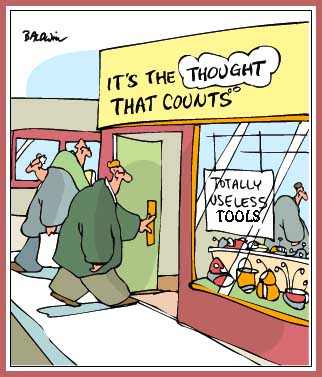

WEB
SITES of INTEREST
Members sites:
Doyle
McConnell's page
Loyd
Ackerman's Page
Falls Mill
Russell Brown's Web Page
Geoff Roehm
Resourse Sites:
American Association of Woodturners
WOOD
ONLINE newsletter
Scott
Phillips Video Help sessions
Arrowmont
School of Arts and Craft
Appalachain
Center for the Arts
Forest
Products Lab. 1999 Wood Handbook
Woodworker's
Journal
WOOD
Online TVWW page
Kevin's Woodturnings
The Oldham Company
The Woodworker's Choice
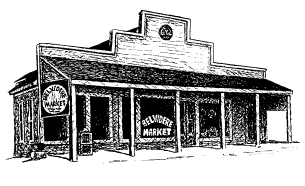
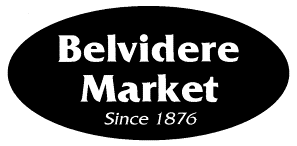
10 % OFF Fine Woodworking
Books from Taunton Press
…We’re open Monday thru Saturday
SEE YOU ON THE
18th!
Tom Gillard Jr.

 Vol. 18/ Issue 2 February
2003 Editor: Tom Gillard Jr.
Vol. 18/ Issue 2 February
2003 Editor: Tom Gillard Jr. 

